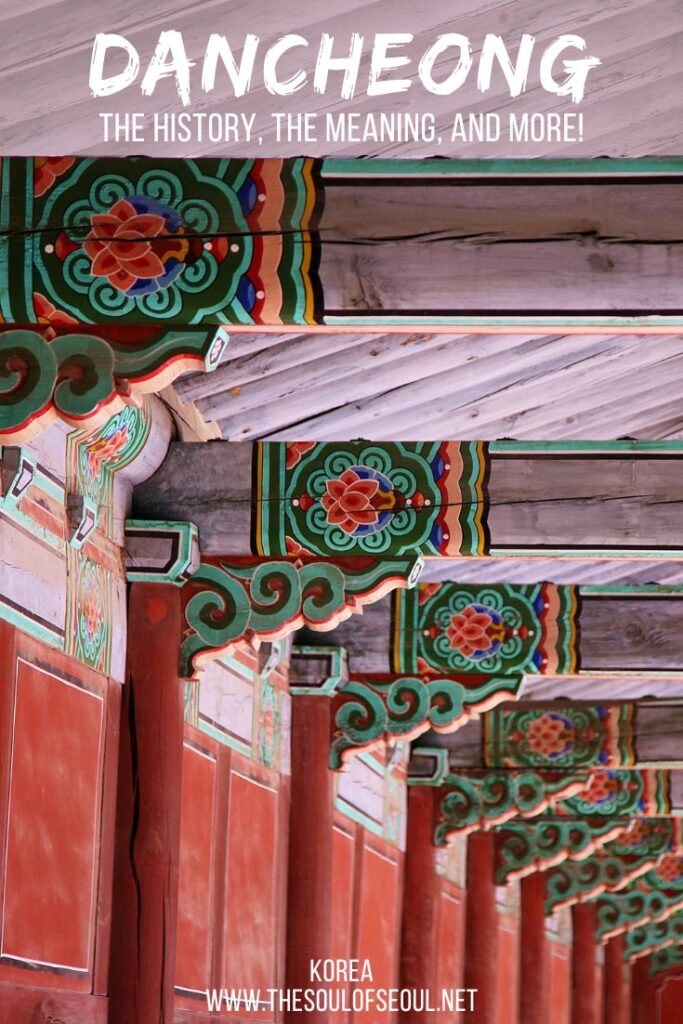Dancheong: The history, the meaning, and more!
Last Updated on May 2, 2025
If you’ve ever sat in awe looking up at the beautifully decorated and colorful traditional palaces or temples in Korea like I have, then you’ve probably noticed the elaborate details and wondered what it all means.
The colorful facades and intricate details are beautiful and the traditional Korean decorative coloring, or dancheong (단청), might take you back to your childhood days of staring at the tortuous Magic Eye books looking for some hidden meaning. There might not be a 3D illusion to find, but there is more symbolism than you might realize.
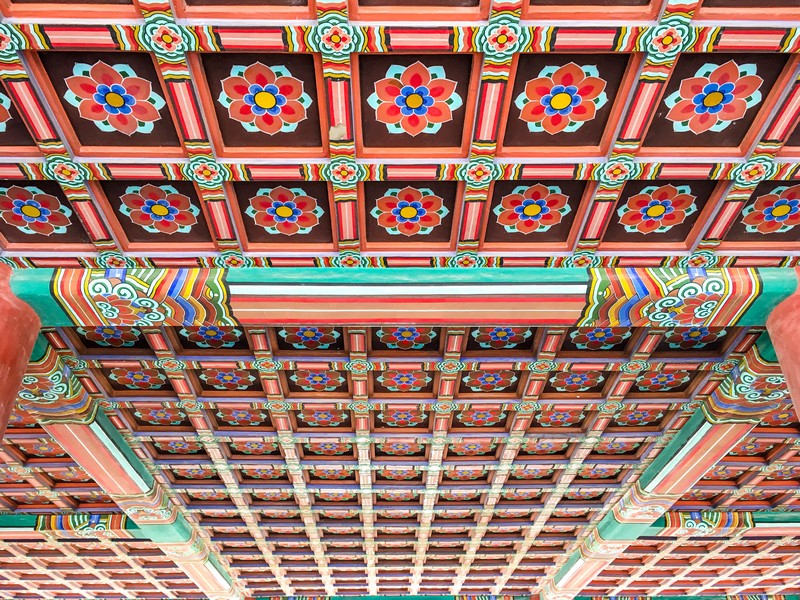
Learn everything you need to know about dancheong:
- What does dancheong mean?
- The history of dancheong
- Why are Korean palaces and temples painted such vivid colors?
- Who paints the palaces and temples in Korea?
- What do the colors of dancheong mean?
- Shop The Soul of Seoul
- The patterns of dancheong
- Where can I see dancheong?
(This post contains affiliate links, which means I receive a certain percentage of a sale if you purchase after clicking at no cost to you. Thank you for your support.)
What does dancheong mean?
Dancheong (단청) refers to ornately decorating traditional Korean wooden buildings and artifacts in Korea with traditional decorative colors. Both the pattern and the colors of the decorations and details hold symbolic meaning thus this décor is often seen in important places in Korea like Buddhist temples, palaces, and Confucian institutions.
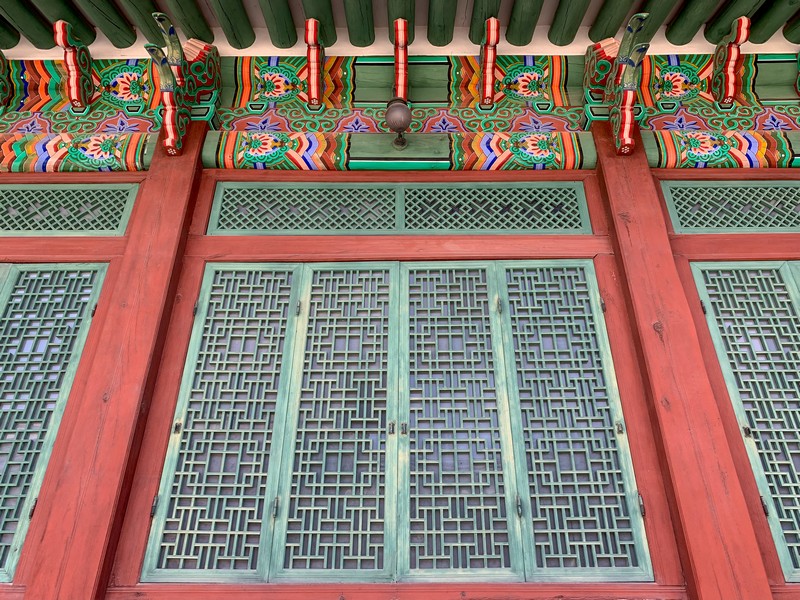
Dancheong literally means ‘red and blue/green’ in English which refers to the pigments used to create the colors. Despite being so colorful, the temples and buildings blend almost seamlessly in with the natural surroundings of the mountains in which you so often find them. This was actually very thoughtful on the part of the artisans that painted the buildings.
Per rules, reddish hues were used on the lower parts of buildings and greenish tones more and more the closer you got to the top in an effort to emulate a tree in order to harmonize with the surround natural space.
The history of dancheong
Dancheong can be found as far back as the Goguryeo Kingdom in Korea from 37BCE to 668CE. Found in tombs from that time and portraying the life of the occupant and well wishes for their time in the afterlife, dancheong was also used during the Baekje and Silla Kingdoms and then into the Goryeo and Joseon. During the Goryeo Dynasty, it was green, red, black, and white that were the colors of choice.
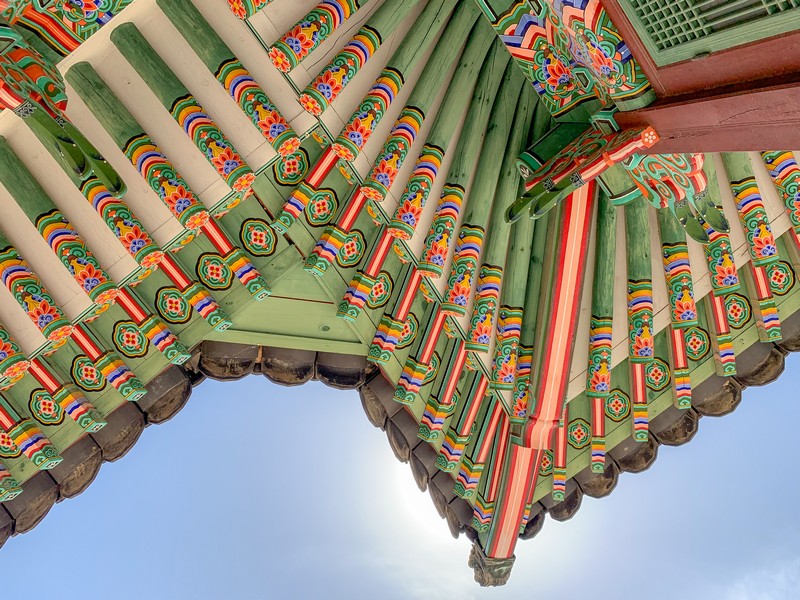
It was during the Joseon Dynasty that a bright yellow and intermediate colors were added to the color spectrum as well as more intricate details. Seen in architecture, historical books and paintings, and on crafts, the beauty of dancheong is uniquely Korean. Today, you will easily spot dancheong on the Buddhist temples and palaces. Pay close attention to notice the differences in detail and color to really understand the tale that they’re telling.
Why are Korean palaces and temples painted such vivid colors?
Actually, dancheong, or the painting of the wood has two functions. The first function is to protect the wood against temperature fluctuations and insects thus prolonging the lifespan of the wood. The second function is as decoration not only making the buildings look appealing, but also covering up flaws or defects in the wood.
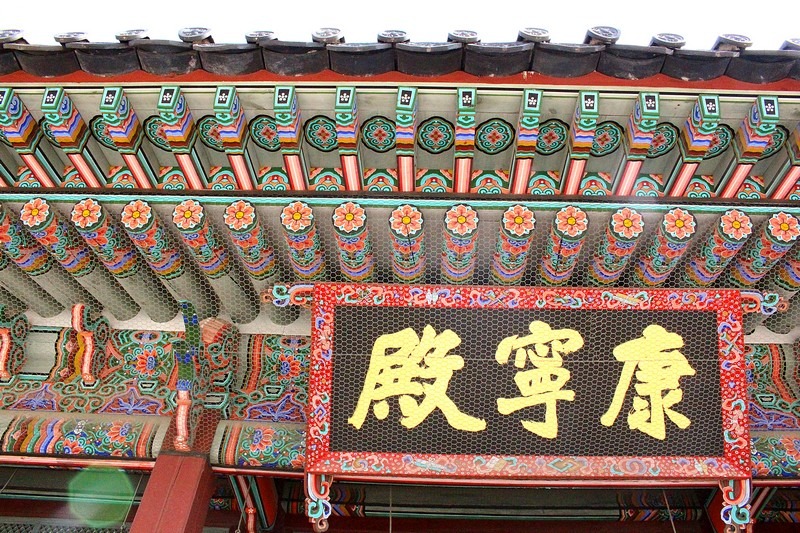
Who paints the palaces and temples in Korea?
Not just anyone can paint the intricate details on the palaces and temples in Korea. Artisans that are highly trained in painting the colorful patterns are called dancheongjang (단청장). The Dancheongjang are considered living national treasures in Korea and have even been classified as National Intangible Cultural Heritage.
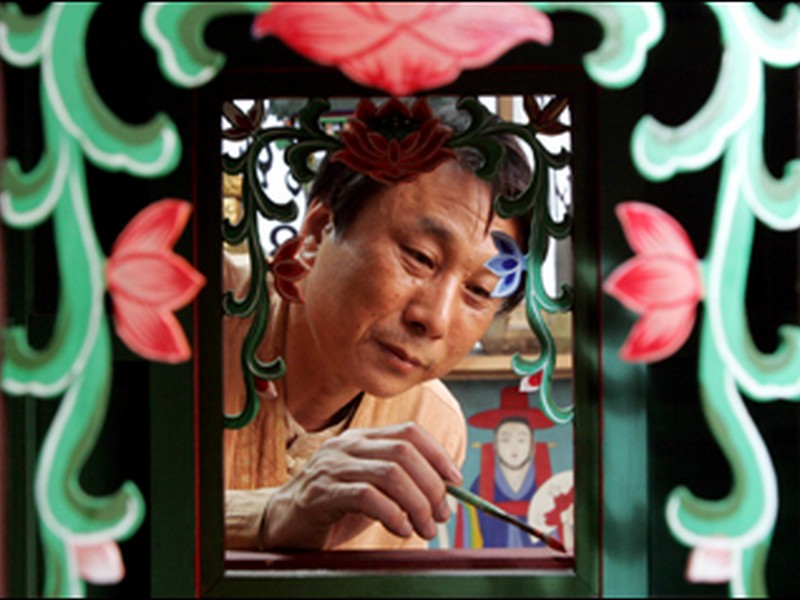
Interestingly, for painting, originally each artisan was in charge of just a single color. This meant that the number of artisans needed to paint a structure was equal to the number of colors that were going to be used in the design.
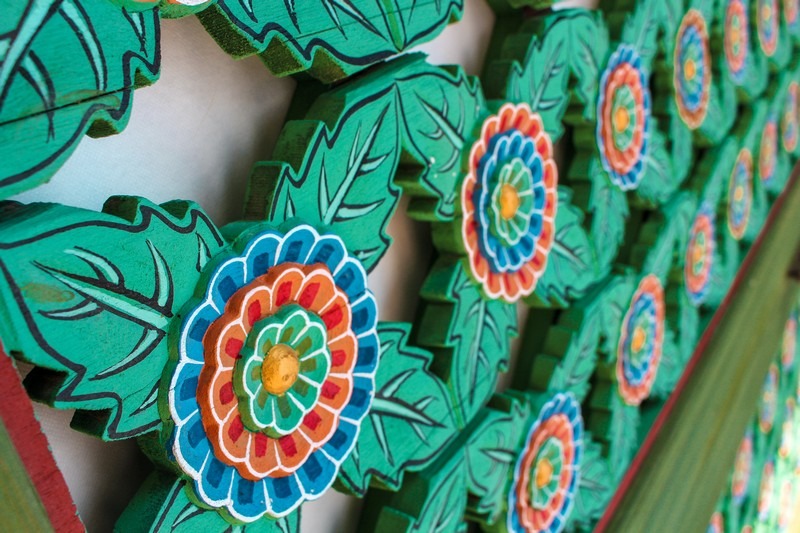
What do the colors of dancheong mean?
Dancheong are based on 5 cardinal colors that represent the yin and yang principles and the philosophy of the five elements.
- Blue: east, dragon, spring, and wood
- White: west, tiger, fall, and gold
- Red: south, birds, summer, and fire
- Black: north, hyeonmu (an imaginary animal that is part turtle and part snake), winter, and water
- Yellow: center, the periods of time between seasons, and Earth
Shop The Soul of Seoul
I love learning about Korean culture and I know you do too. I created some fun dancheong inspired designs based on my research. If you’d like to represent and share Korean culture wherever you are, look in to The Soul of Seoul Shop for some Korea-inspired products.
The patterns of dancheong
There are generally four patterns in dancheong: meoricho (머리초), byeoljihwa (별지화), bidan munui (비단무늬), and dangdong munui (단동무늬).
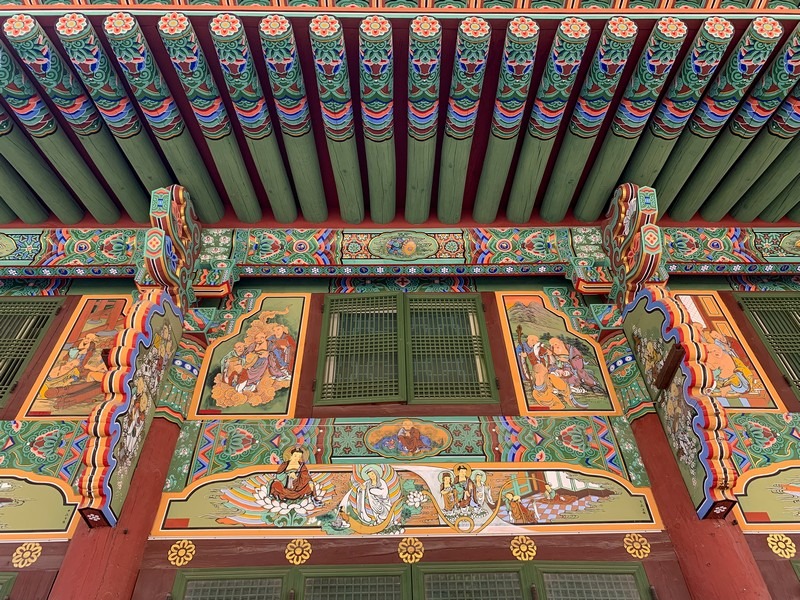
Meoricho (머리초) is a basic pattern and occupies the most space in buildings. It adorns eaves, support beams, and corners with motifs such as feathers, pomegranates, green flowers, and water lilies.
Byeoljihwa (별지화) decorates the space between two meoricho. This space tells stories using natural elements like the sun, moon, stars, and clouds that are stylized into symbolic forms. You can also see rocks, mountains, waves, fire, and flowers. You will see the sipjangsaeng (십장생) or the Ten Symbols of Longevity as well as animals associated with the Buddhist belief system.
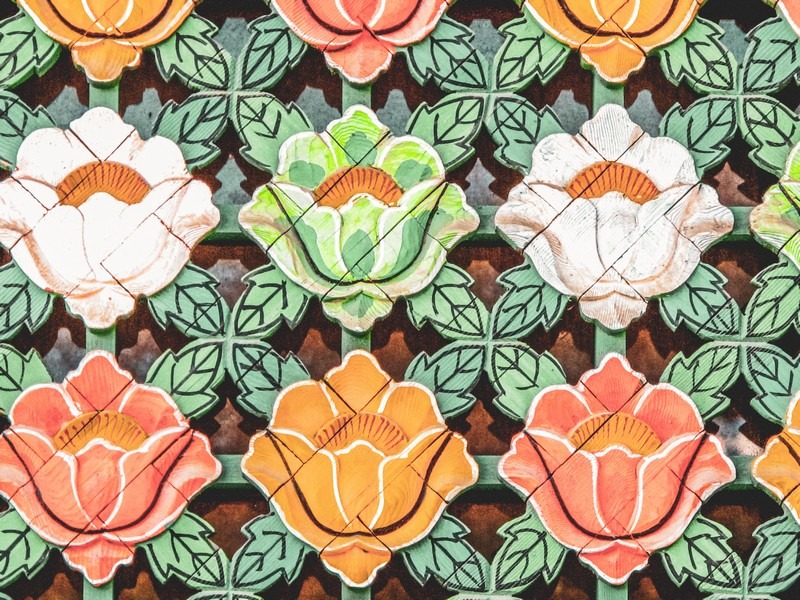
You can find all kinds of flora and fauna on the sides of Korean temples. You could stare at the paintings for hours still finding more to see. Patterns will often contain birds, dragons, tigers, tortoises and more.
Some of the images you might see and what they symbolize include:
- Lotus Flowers: Buddhism, purity, nobility
- Pomegranate: wealth and honor
- Peony: prosperity, beauty, good fortune, wealth
- Chrysanthemum: longevity of life
- Waterfowl (ducks, swans, geese): freedom
- Magpie: good luck
- Butterfly: grace
- White elephant: good luck
- Tiger: invites good fortune and repels evil
- Fish: freedom
Bidan munui (비단무늬) is the geometric pattern that includes circles, triangles, rectangles, and lines used in single form encasing the yin and yang symbol, called the taeguk in Korean. This type of pattern is also called the silk pattern.

Dangdong munui (단동무늬) are the unique and isolated images that contain a number of different motifs including natural objects along with characters from stories as well as the necessities of life. They also tell their own story. As you walk around a temple in Korea, you’ll find these and be able to piece together a story.
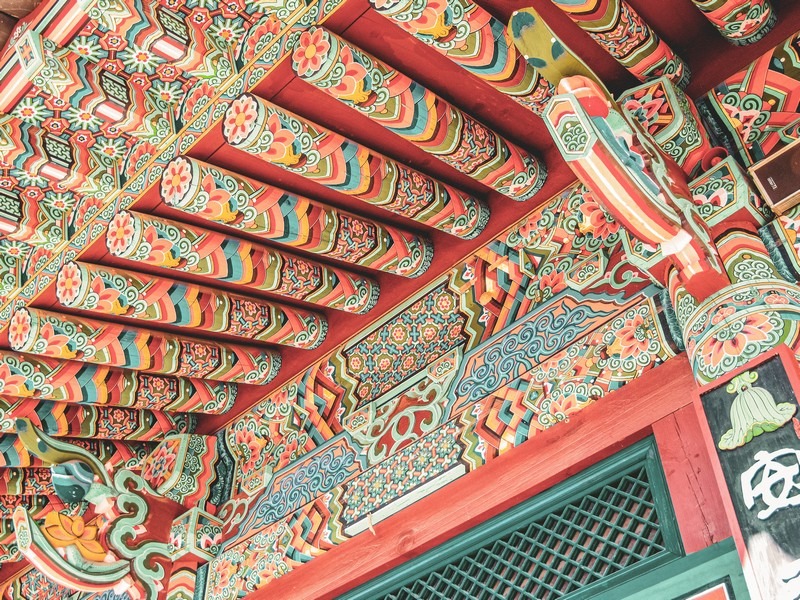
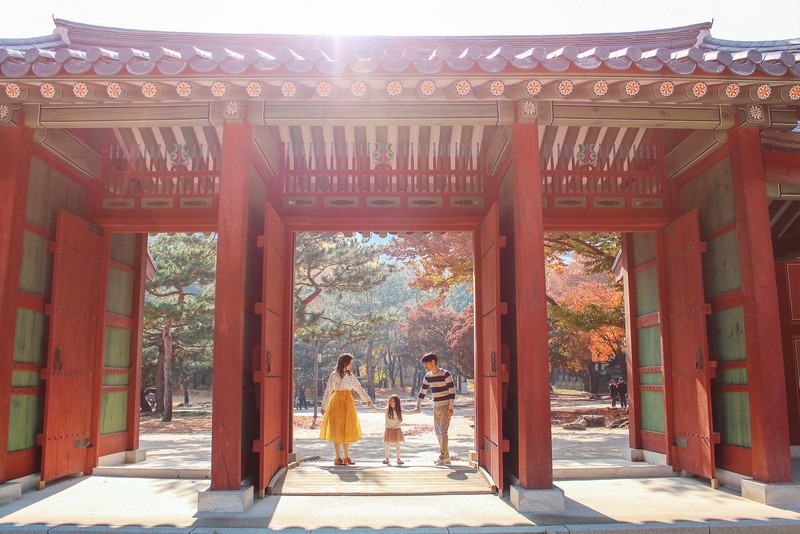
Where can I see dancheong?
Korean temples: There are temples around the country so no matter where you’re headed on your trip here, you’ll be able to find some fine examples of dancheong. Check out this list of the top Buddhist temples in Korea to see.
Korean palaces: The palaces in Seoul are just breathtaking and a must visit. Find out more about them in their individual guides.
- Gyeongbokgung Palace: This is the main palace in Seoul and largest thus it is often the one that sees the most tourists. It is beautiful and huge and you could spend hours seeing everything there is to see there. Find out more about Gyeongbokgung Palace.
- Deoksugung Palace: This palace brings together quite a few different historical and architectural styles. Sitting right across the street from City Hall, Deoksugung offers something a bit different to see but still plenty of dancheong. Learn more about Deoksugung Palace.
- Changdeokgung Palace: Just up the road from Gyeongbokgung Palace, Changdeokgung Palace holds the Secret Garden and is popular for visitors year round. This the second more popular palace in Seoul for visitors. Learn more about Changdeokgung Palace.
- Changgyeonggung Palace: Changgyeonggung Palace is just around the corner from Changdeokgung Palace and actually connected via a gate in the back. This palace has some unique things to see that not many tourists realize. Find out more about Changgyeonggung Palace.
- Gyeonghuigung Palace: The smallest of the main palaces in Seoul, Gyeonghuigung Palace is a bit away from the others. It’s small but there are some real benefits to visiting especially if you want to get pictures without people in them. Find out more about Gyeonghuigung Palace.
Did you like this post? Pin IT!

